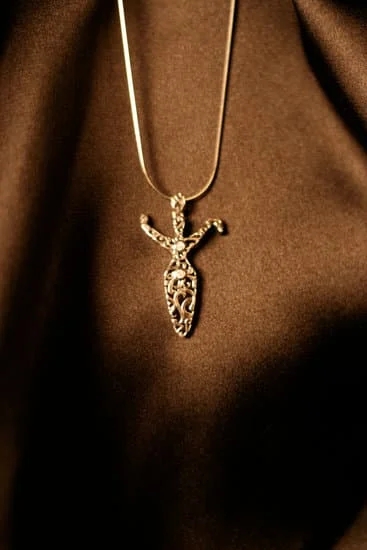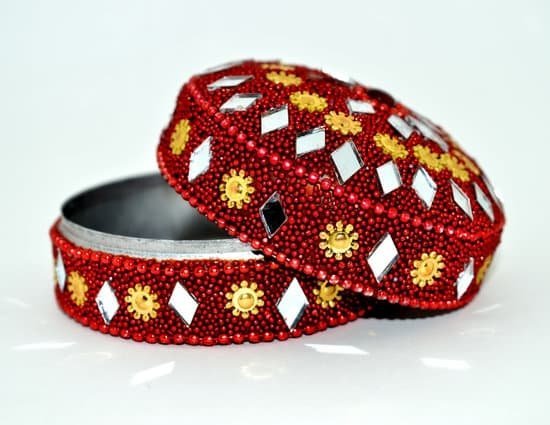Are you wondering how to price handmade jewelry if you’re selling locally? Pricing your handmade jewelry can often be a difficult and challenging task, especially when it comes to determining the right balance between making a profit and staying competitive in the market.
This article will provide you with valuable insights into understanding the cost of materials, calculating labor and time, factoring in overhead and other business expenses, researching competitor pricing in the local market, considering the perceived value of your handmade jewelry, creating a pricing structure that accommodates wholesale and retail, determining a sustainable profit margin, and adjusting prices as market conditions and business needs change.
When it comes to pricing handmade jewelry for local sales, one of the key factors to consider is understanding the cost of materials. This includes everything from gemstones and beads to metal findings and wire. By accurately calculating the cost of each material used in your jewelry pieces, you can ensure that you are setting a price that not only covers these expenses but also allows for a reasonable profit margin.
In addition to considering material costs, it’s important to factor in labor and time when pricing your handmade jewelry. Whether you’re meticulously handcrafting each piece or assembling various components together, valuing your time and expertise is crucial in determining a fair price for your creations. Remember to compensate yourself for the hours spent designing, creating, assembling, and refining each piece of jewelry.
Calculating Labor and Time
When it comes to pricing handmade jewelry for local sales, it’s essential to accurately calculate the labor and time put into creating each piece. This factor is often overlooked by many artisans but is crucial in determining the true value of your jewelry. Here’s how to price handmade jewelry if you’re selling locally while factoring in labor and time.
Tracking Your Time
First and foremost, it’s important to track the amount of time you spend on each piece of jewelry. This includes not only the actual assembly of the jewelry but also any design work, sourcing materials, and even time spent promoting and selling your products. By keeping a detailed record of your time, you can more accurately assess your hourly wage for creating your handmade jewelry.
Calculating Labor Costs
Once you have a clear understanding of how much time goes into making each piece, it’s necessary to assign a dollar value to that time. Many artisans use their desired hourly wage as a baseline for this calculation. It’s important to consider factors such as skill level, experience, and expertise when determining an appropriate hourly rate.
Adding Labor Costs to Materials
To determine the total cost of labor for each piece of jewelry, simply multiply the hours spent on creation by your hourly rate and add this amount to the cost of materials. This will give you a comprehensive understanding of the true cost behind each item you create. By including these labor costs in your pricing strategy, you ensure that every sale contributes not just to covering material expenses but also compensates you for your valuable time and skill.
By carefully tracking your time, calculating labor costs accurately, and incorporating these figures into your pricing structure, you can confidently assign fair prices to your handmade jewelry when selling locally.
Factoring in Overhead and Other Business Expenses
When it comes to pricing handmade jewelry for local sales, factoring in overhead and other business expenses is crucial for ensuring that your pricing covers all costs while still allowing room for profit. Understanding the full scope of your business expenses will give you a clear picture of what you need to include in your pricing structure.
First and foremost, it’s important to consider the cost of materials as well as any additional supplies needed for creating your handmade jewelry. This includes gemstones, metals, beads, clasps, and any other components used in the design. Keeping track of these costs will help you accurately calculate the base cost of each piece.
In addition to materials, you should also factor in labor and time spent on creating each piece of jewelry. Whether you pay yourself an hourly wage or assign a set value to your time and skill, be sure to incorporate this into the price of each item. Tracking the amount of time spent on each piece will provide insight into how much labor cost is associated with it.
Lastly, don’t forget about other business expenses such as marketing materials, packaging, display materials (if selling at craft shows or markets), insurance, and any fees associated with selling locally. All of these costs contribute to the overall overhead of your business and should be accounted for when setting prices.
| Expense | Estimated Cost |
|---|---|
| Materials | $300 per month |
| Labor (monthly) | $500 |
| Business Expenses | $200 per month |
Researching Competitor Pricing in the Local Market
When it comes to pricing your handmade jewelry for local sales, it’s important to take into account the prices set by competitors in your area. Researching competitor pricing in the local market will give you a better understanding of the price range for similar products and help you make informed decisions about your own pricing strategy. Here are a few ways you can go about researching competitor pricing:
- Visit Local Craft Fairs and Markets: Take the time to visit local craft fairs, markets, and other events where handmade jewelry is being sold. Pay attention to the prices set by other vendors and take note of the types of materials and designs they offer.
- Online Research: Use online platforms like Etsy or social media to search for local handmade jewelry sellers. Take note of their pricing, product offerings, and customer reviews to understand how your products compare.
- Engage with Other Local Artisans: Building relationships with other local artisans can provide valuable insights into pricing strategies. Attend networking events or join artisan communities to learn from others’ experiences in setting prices for their handmade jewelry.
By conducting thorough research on competitor pricing in your local market, you can gain a better understanding of the competitive landscape and ensure that your own pricing is in line with what customers are willing to pay for similar products.
Remember that while competitor pricing can serve as a guide, it’s also important to consider the unique value proposition of your handmade jewelry. Take into account factors such as materials used, craftsmanship, and design innovation when positioning your products within the local market.
Ultimately, researching competitor pricing will help you make informed decisions about how to price your handmade jewelry for local sales, ensuring that you remain competitive while still maintaining a profitable business.
Considering the Perceived Value of Your Handmade Jewelry
When it comes to pricing handmade jewelry for local sales, it’s crucial to consider the perceived value of your products. This involves understanding how your target customers perceive the quality, uniqueness, and overall appeal of your handcrafted pieces.
Unique Designs and Craftsmanship
One key factor in determining the perceived value of your handmade jewelry is the uniqueness of your designs and the level of craftsmanship involved. Customers often place a higher value on one-of-a-kind pieces that showcase creativity and skill. As such, consider highlighting the intricate details, high-quality materials, and superior workmanship that set your jewelry apart from mass-produced items.
Brand Image and Storytelling
In addition to the physical attributes of your jewelry, it’s important to consider the brand image you wish to convey and the storytelling behind each piece. Local customers are often drawn to artisanal products with a meaningful narrative or connection to the maker. By effectively communicating the inspiration, care, and passion that go into creating your jewelry, you can enhance its perceived value and appeal.
Cultural Significance and Ethical Sourcing
Finally, take into account any cultural significance or ethical sourcing practices associated with your handmade jewelry. Whether it’s using sustainable materials, supporting local artisans, or preserving traditional techniques, these factors contribute to the perceived value of your products in the eyes of environmentally-conscious or socially-aware consumers.
By considering these elements, you can better understand how local customers perceive your handmade jewelry and use this insight to strategically price your pieces for maximum appeal and profitability.
Creating a Pricing Structure That Accommodates Wholesale and Retail
When selling handmade jewelry locally, it is essential to create a pricing structure that accommodates both wholesale and retail scenarios. This allows for flexibility in pricing while ensuring that you are making a profit from your sales. Here are some key considerations for creating such a pricing structure:
- Wholesale Pricing: When selling to retailers or other businesses, you will typically offer a lower price per item in order to make the sale attractive to the buyer.
- Retail Pricing: For direct sales to individual customers, you can set a higher price per item to cover your costs and provide a profit margin.
To determine the wholesale and retail prices for your handmade jewelry, consider the following factors:
- The cost of materials: Calculate the cost of all materials used in each piece of jewelry, including beads, wire, clasps, etc.
- Labor and time: Determine the amount of time it takes to create each piece and calculate the labor cost based on your desired hourly rate.
- Overhead and other business expenses: Factor in costs such as rent for your workspace, utilities, packaging materials, marketing expenses, and any other overhead related to running your jewelry business.
By carefully considering these factors and creating separate pricing structures for wholesale and retail scenarios, you can ensure that you are effectively pricing your handmade jewelry for local sales. This approach allows you to be competitive in the local market while also maintaining profitability.
Remember that pricing your handmade jewelry thoughtfully is crucial for sustainability and growth of your business. It’s important to regularly review and adjust your prices as needed based on market conditions and changes in your business needs. By doing so, you can maintain a sustainable profit margin while offering competitive prices within the local market.
Determining a Sustainable Profit Margin
Once you have taken into consideration the cost of materials, calculated labor and time, factored in overhead and other business expenses, researched competitor pricing in the local market, and considered the perceived value of your handmade jewelry, it is time to determine a sustainable profit margin. This step is crucial in ensuring that your business not only covers its costs but also generates enough profit to sustain and grow.
To determine a sustainable profit margin, you should start by setting a target for your desired profit percentage. Many small businesses aim for a profit margin between 20% and 50%, but ultimately the right percentage for your handmade jewelry business will depend on various factors including your market positioning, brand image, and long-term business goals.
Once you have set your target profit margin, you can then calculate the final selling price by adding this percentage to your total production cost.
It is important to regularly review and adjust your profit margin as market conditions and business needs change. Keeping an eye on trends in consumer behavior, purchasing power, and competition can help you make informed decisions about whether it is necessary to raise or lower prices to maintain a competitive edge while still ensuring a sustainable level of profitability.
| Factor | Data |
|---|---|
| Desired Profit Margin | 20% – 50% |
| Factors affecting Profit Margin | Market Positioning, Brand Image, Long-term Business Goals |
Adjusting Prices as Market Conditions and Business Needs Change
In conclusion, pricing handmade jewelry for local sales involves careful consideration of various factors to ensure a fair and sustainable pricing structure. Understanding the cost of materials, calculating labor and time, factoring in overhead and other business expenses, researching competitor pricing in the local market, and considering the perceived value of your handmade jewelry are all important steps in determining the right price point.
Additionally, creating a pricing structure that accommodates both wholesale and retail needs, as well as determining a sustainable profit margin are crucial aspects of setting prices for your handmade jewelry. It is also important to remain adaptable and flexible with your pricing strategy by adjusting prices as market conditions and business needs change.
Ultimately, finding the perfect price point for your handmade jewelry involves a balance between covering costs, staying competitive in the local market, and ensuring a reasonable profit margin. By carefully considering all these factors, you can confidently set prices for your handmade jewelry that attract customers while also supporting a successful business. Remember to always reassess and adjust prices as needed to reflect changes in the market or business needs.
Frequently Asked Questions
How Do You Charge for Handmade Items?
When it comes to charging for handmade items, I take into consideration the cost of materials, the time and effort put into making the item, and any other expenses like packaging or shipping. I also factor in the market value and what customers are willing to pay.
What DIY Jewelry Sells the Most?
DIY jewelry that tends to sell the most includes personalized or customizable pieces, minimalist designs, and those made with semi-precious stones or crystals. Pieces that are trendy or have a unique touch often catch the attention of buyers.
What Is the Best Place to Sell Handmade Jewelry?
The best place to sell handmade jewelry depends on your target market and personal preference. Online platforms like Etsy, Shopify, or even social media can provide a wide audience reach.
Local craft fairs or artisan markets also offer opportunities for in-person sales and networking with potential customers. Ultimately, finding the right place involves experimenting and finding what works best for you and your products.

Welcome to my jewelry blog! My name is Sarah and I am the owner of this blog.
I love making jewelry and sharing my creations with others.
So whether you’re someone who loves wearing jewelry yourself or simply enjoys learning about it, be sure to check out my blog for insightful posts on everything related to this exciting topic!





